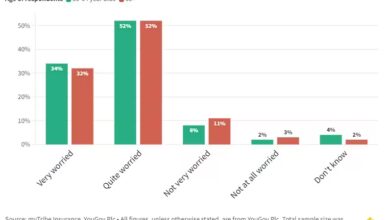How much should a personal trainer cost?

Working out how much you should charge as a personal trainer can be difficult, especially if you’re newly qualified or relatively inexperienced.
You want to avoid underselling yourself, but at the same
time, you don’t want to set your prices so high that you miss out on potential new
clients.
If you’re a personal trainer, you’ll need to consider a few
things when working out your pricing, from projecting your expected income to
assessing the competition in your area. Thankfully, we’ve put together a handy
guide to help you decide.
We’ve also chatted to a few experienced personal trainers to get their valuable expertise.
How much should personal trainers charge?
Location

Where you’re based can greatly impact how much you can realistically
charge as a PT.
In big cities like London, personal trainers can charge up
to £200 for a one-to-one session, whereas some trainers may charge as little as
£15 per hour outside the capital.
The average hourly cost of a personal trainer in the UK is between £30 and £50. However, finding out what other local personal trainers are charging for their services will give you a good idea of the going rates in your area.
Tim Walker, the founder of Evolve Fitness in London, said:
“I know some PTs who work with some of the top lawyers in London, and they charge £7-800 per session because they can—because people around there will pay it.
“My advice to other PTs, though, is—scout the area, look at the demographics and set your price from there.”
Demand

The higher the demand for your services, the more you can
increase your hourly cost as a personal trainer.
You’re unlikely to be short of work if your target customer
base is celebrities, footballers, and actors. These people not only pride
themselves on their appearance, but most also don’t work traditional 9-5 jobs
and have plenty of money to spare.
Walker said: “If there are thousands of people in your area
who exercise regularly and can easily afford it, you can set your prices
higher.
“You just need to be realistic about how in-demand you
are—don’t just think that you should charge £100 per session because some
fitness ‘guru’ has said you can make this much.”
Good marketing is a great way to increase the demand for
your services. This can involve everything from managing your website and
social media channels to advertising in local media.
Ollie Lawrence, a Manchester-based personal trainer who has previously trained the Philadelphia Eagles NFL team, said: “Always work on your website. When potential clients are searching online, your website is the first impression they’ll have when looking to train with you, so make sure your website reflects what your business does.”
Your website can also contain testimonials from past or current clients, as this is another good way of demonstrating to prospects how you’ve helped others.
Experience

Once you’ve gained more PT experience and expanded your
skillset, don’t be afraid to increase how much you charge as a personal
trainer.
Walker said: “Experience brings confidence, and confidence
allows you to charge more for your services. If you’re prepared to be patient
and hone your skills, you’ll gain the experience you need to charge a higher
fee.
“Don’t do what I’ve seen some PTs do and act like the
world’s best salesperson from day one because you’ll reach your ceiling very
quickly and fade away. You may also come across as if you don’t care about
providing your clients a unique, good-quality service.”
Competition

It’s more than just your skillset, specialisms, and
experience you need to consider when deciding how to price your PT services.
You also need to assess your competition. What type of service do they provide? What level of service do they provide, and is it more or less advanced than yours?
We spoke to Darren Craven, a personal trainer based in Stockport, who warns against setting your fees high initially, especially if you don’t have the experience or advanced qualifications to support your perceived value.
He said: “As a new PT, it’s tempting to jump into a high
pricing strategy to cover all your overheads, gym rental fees, uniform, travel,
etc. But unfortunately, clients aren’t going to pay huge sums for a trainer
with no experience.
“When I started training, I stuck to a competitive pricing
strategy, but I made sure I offered clients something that others didn’t, so
they had a reason to choose me over others. For me, this was the option of
online fitness training to supplement their weekly sessions.”
Walker added: “Don’t charge the most in your area unless
you’re the most qualified, experienced, and in-demand PT in that area. You’d
rather charge £30 and pick up some clients than charge £60 and get nothing.
“At the same time, don’t set your price too low to undercut the competition because you’ll end up taking on cheap clients!”
Costs
In addition to your skills, location, and experience, there
are numerous business costs you need to factor into the fee you charge as a PT.
Depending on your client’s goals, you might need to charge
extra for personalised nutritional advice and individual meal plans. If you
visit clients at their homes, you’ll need to consider travel costs too.
Then there are the more ‘boring’ (but important) costs that no one likes to consider, such as tax and national insurance. The amount you’ll need to pay for NI contributions will depend on your earnings, but they start at £3.45 per week if you’re self-employed and are paid via self-assessment.
The personal tax allowance is currently £12,570 for the tax
year 2025/26, so any earnings over that threshold (after business expenses are
deducted) will be liable for tax.
The HMRC website is a great resource that gives you the lowdown on self-employment if you’re new to it all.
Other costs you’ll likely need to consider include your equipment and personal trainer insurance. The latter can protect you if a claim is made against you for injury to a client during a session, or if the equipment you use to train is lost, damaged, or stolen.
USPs

According to Statista, more than 64,000 registered health and fitness instructors are working in the UK.
In an increasingly saturated and competitive market, making
your business and services stand out has never been more important.
This is where you’ll need to work out your USP (unique
selling point) – i.e. what makes you different from the other PTs in your area?
Do you have different or higher-level qualifications? Do you offer something
that they don’t?
Not only should all of this be included on your website to
highlight your credentials, but it can also be used to price your services, too.
Specialist personal trainer insurance through Insure4Sport
If you’re serious about a career in personal training, you
may want to consider protecting yourself and your clients with specialist PT insurance.
Specialist personal trainer insurance through Insure4Sport is designed to cover you if something goes wrong, such as if your equipment is lost, damaged, or stolen, or if a client makes a claim against you for negligence.
Learn more or get a quote online today.



